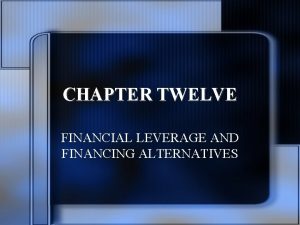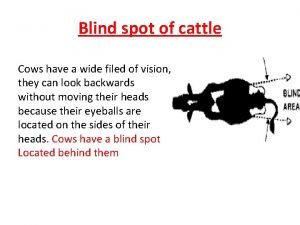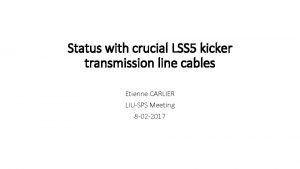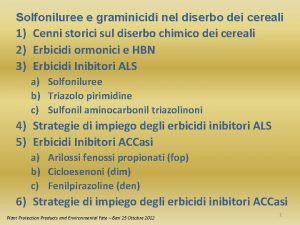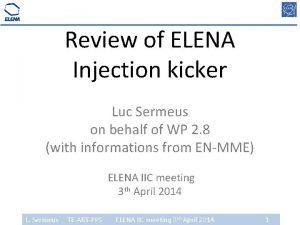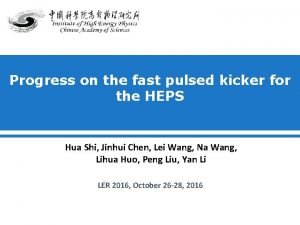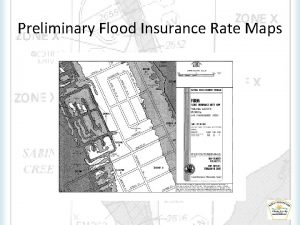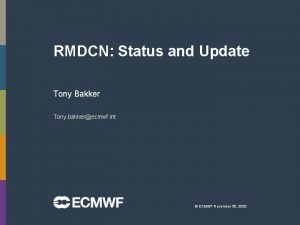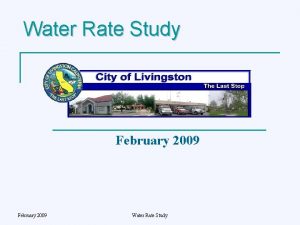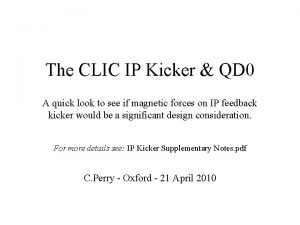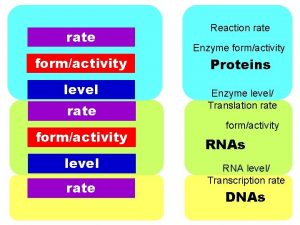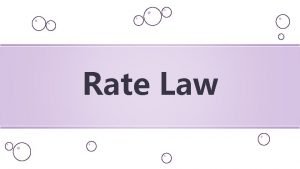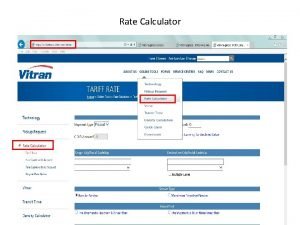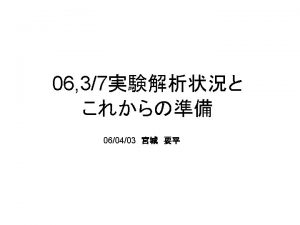High Rate Kicker Preliminary Study Quick Update Tony











![References [1] M. J. Barnes, L. Ducimetiere, T. Fowler, V. Senaj, L. Sermeus. “Injection References [1] M. J. Barnes, L. Ducimetiere, T. Fowler, V. Senaj, L. Sermeus. “Injection](https://slidetodoc.com/presentation_image_h2/696548a2d036ea754d3c16e47b136a5e/image-12.jpg)
- Slides: 12

High Rate Kicker Preliminary Study (Quick Update) Tony Beukers/Tao Tang 4/8/14

Parameters for Spreader Parameter Value Unit Energy 4 Ge. V Kick 1 m. Rad Rate 1 MHz Length 6 ? m Aperture 1 cm Pulse to pulse stability 100 ppm Jitter When Off (compared to main pulse) 50 ppm • “Jitter When Off” from “Post Laser Heater Diagnostic Beam-Line PRD” • Works out to integrated field of 13. 4 m. T-m required • For all topologies considered, 5 m. T most reasonable 3 ea. 1 -meter sections • Bi-polar pulse possible with two separate kickers, so not an area of extreme focus. 2

Magnet Cross Section • 2 -types of magnets shown to the right. C -core and Window frame. Best choice depends a bit on driver topology. • Ferrite loaded magnet. Losses from drive field highly dependent on the core type. For 5 m. T, 100 ns sine wave excitation at 1 MHz 11 W/m for 4 M 2, 450 W/m CMD 5005 (common kicker material). • On the order of 2% change in effective µ over duration of pulse. • Coated beam-pipe used to shield beam current from magnetic coupling to ferrite. 3

Beam Coating Losses • Losses in conductive coating increase with beam current, high frequency components of pulse, and pulse rate. • Eddy currents from the driver pulse go down with increased coating resistivity. . . but loss from the beam image current goes up. • Beam image current losses (length =8. 3µm, q=0. 5 n. C): • Eddy current losses found through simulation. Figure from [2] • Total loss is 600 W/m with 90Ω/m coating. • Reduce loss (if necessary) with conductive strips, 4

In-Tunnel Driver • Mount MOSFET drivers directly on Ferrite loaded magnets in tunnel. • Multiple drivers reduces the inductance of each section so each driver can rise in tens of ns. • Easily redundant for longer system lifetime. Figures from LBNL NGLS paper. [2] • 5 m. T/m achievable goal. 5

Driver Types 3 Segments/meter MOSFET Losses 456 W/m 4 Segments/meter MOSFET Losses 128 W/m Resistive Losses 944 W/m 9 Segments/meter MOSFET Losses 1000 W/m Resistive Losses 3285 W/m 5 Segments/meter MOSFET Losses 520 W/m *Losses assume NON rad-hard MOSFET 6

Driver Types 3 Segments/meter MOSFET Losses 456 W/m 4 Segments/meter MOSFET Losses 128 W/m Resistive Losses 944 W/m 9 Segments/meter MOSFET Losses 1000 W/m Resistive Losses 3285 W/m Too much power! 5 Segments/meter MOSFET Losses 520 W/m *Losses assume NON rad-hard MOSFET 7

Tunnel Radiation • • • Total ionizing dose causing non-recoverable failure in MOSFET is main problem. Back-of-envelope yields ~15 k. Rad/year. 1 rad-hard device rated at 100 k. Rad (6 years). Expensive, not electrically great, hard to get. Collimator reduces radiation by a factor of 10 -100. Like to put NON rad-hard device in total dose test. Could it survive behind a collimator? More input and/or modeling from RP may be useful. 8

Transmission Line Kicker • Loaded sections of ferrite and discrete capacitors simulate a transmission line. • Used at SLAC in damping ring and at CERN. • Typically used in high voltage. But for our low voltage, possible to tune magnet impedance with small chip capacitors. 9

Transmission Line Ringing Sum of all magnet currents. Traveling Waves • Ringing damps to below 50 ppm of the main pulse within 1µs. Ringing reduced with more sections. 10

Conclusions • “In Tunnel” and “Transmission Line” Kicker both still options. • “In Tunnel” Kicker does not have a perfect driver solution, but three topologies are possible. Need testing and more RP input to fully evaluate radiation effects. • “Transmission Line Kicker” looks promising according to simulations. Some testing on the spare NDR magnet would be useful. • Bottom line: Both methods look feasible. Additional testing to determine which is best. 11
![References 1 M J Barnes L Ducimetiere T Fowler V Senaj L Sermeus Injection References [1] M. J. Barnes, L. Ducimetiere, T. Fowler, V. Senaj, L. Sermeus. “Injection](https://slidetodoc.com/presentation_image_h2/696548a2d036ea754d3c16e47b136a5e/image-12.jpg)
References [1] M. J. Barnes, L. Ducimetiere, T. Fowler, V. Senaj, L. Sermeus. “Injection and extraction magnets: Kicker magnets” Mar 2011. 26 pp. Published in CERN-2010 -004, pp. 141 -166. Presented at Conference: C 09 -06 -16 Proceedings. [2] M. Placidi, G. C. Pappas, J. Galvion, M. Orocz. “Update on Kicker Development for the NGLS”, TUPPR 095, Proceedings of IPAC 2012. 12







